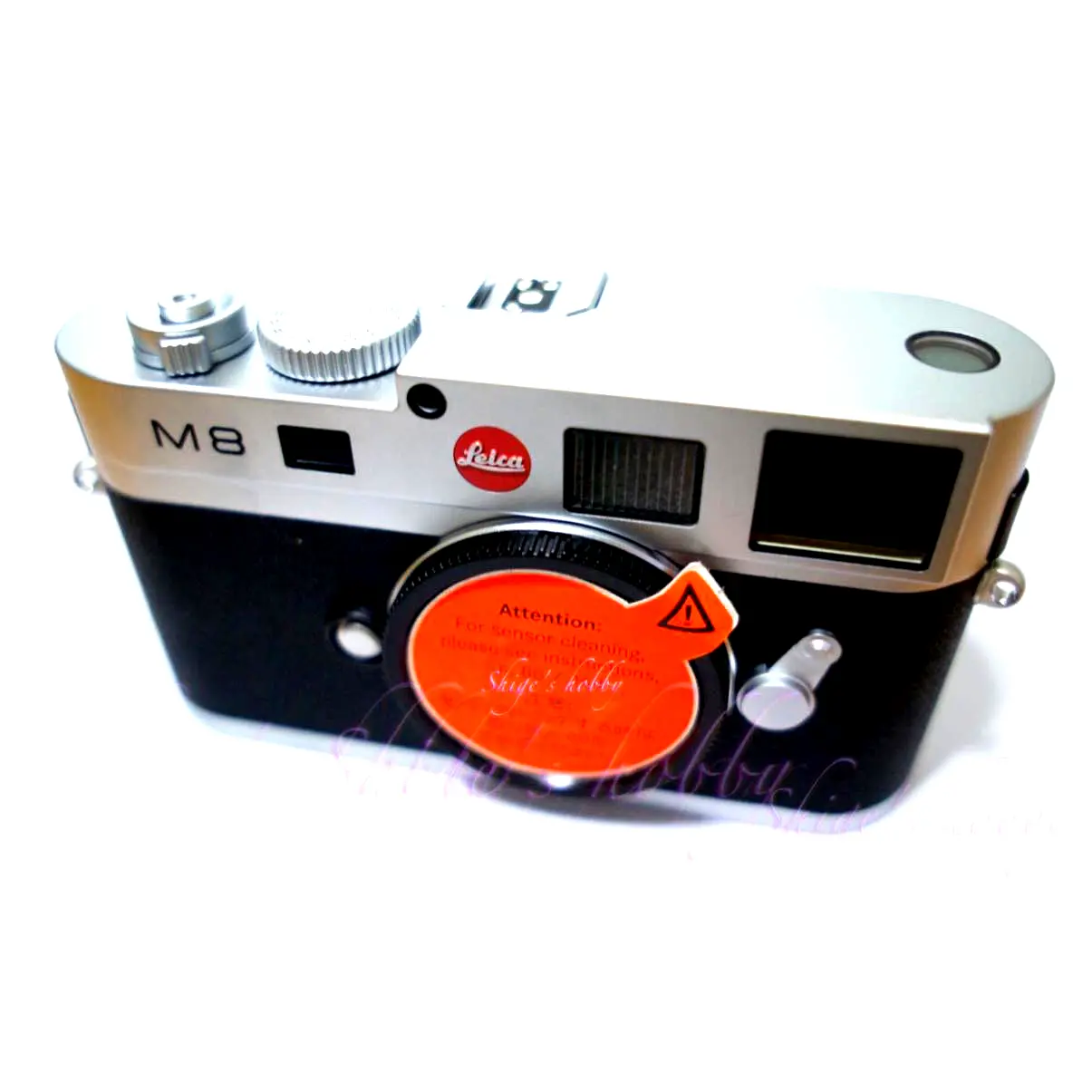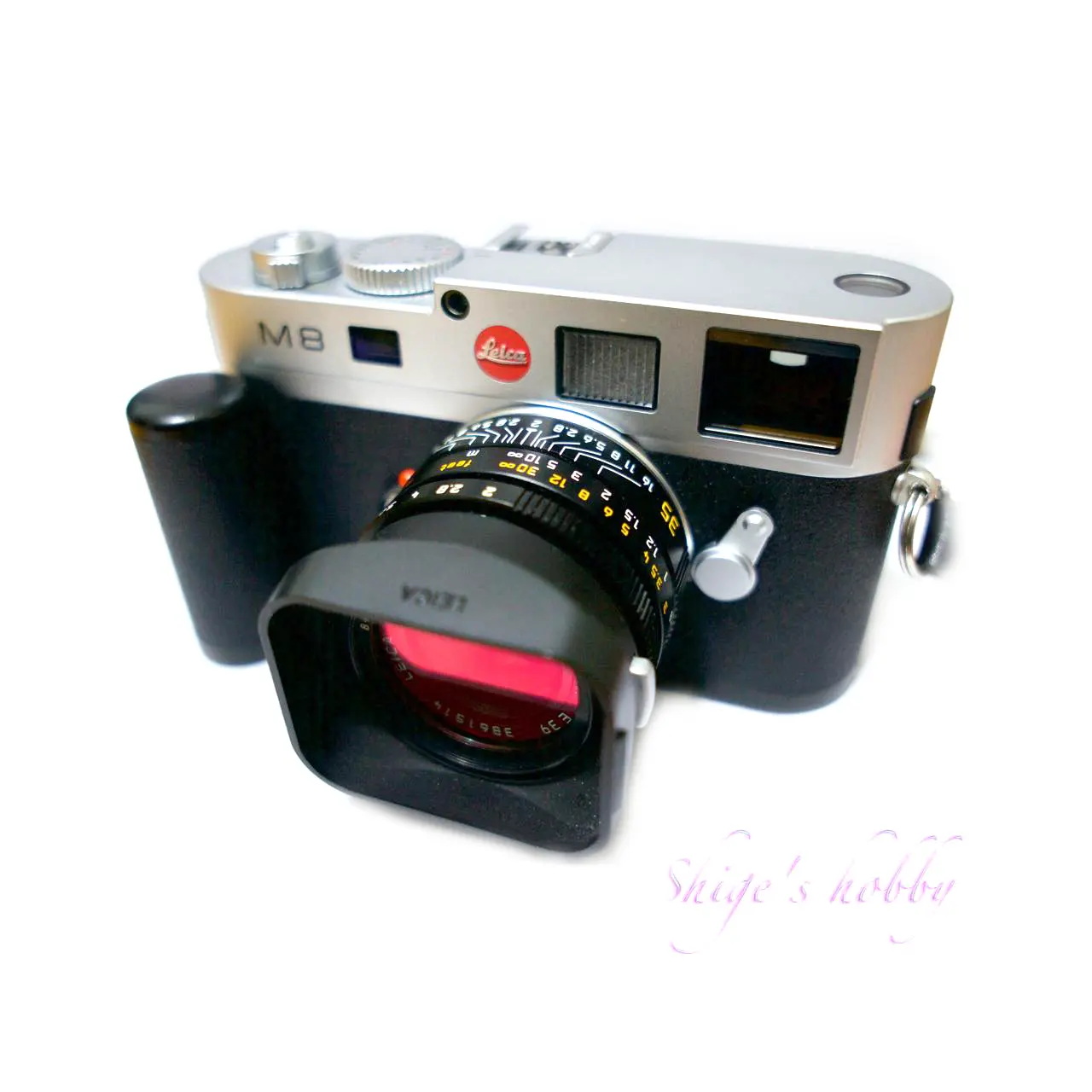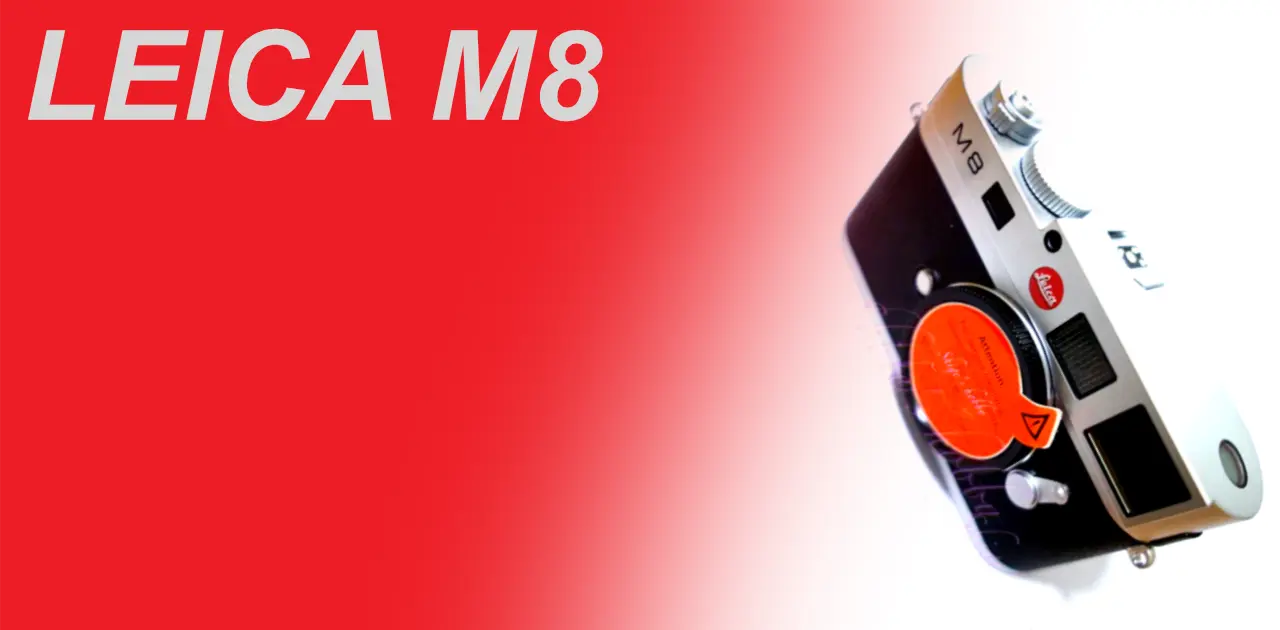Last updated on 2025-10-26
A review and Photo Examples of the LEICA M8 Rangefinder Digital Camera with some LEICA M and L39 lens.
- Please see the disclaimer regarding advertising here.
- Italicized links in the text are advertisement links that take you to other sites.
Table of contents

Gallery
The following lenses were used to take the example photos:
Review


1.Overview
The LEICA M8 was Leica’s first M-series digital camera. While slightly thicker than the film-based Leica Ms, it still fully embodies the Leica M’s shape.
The image sensor, the heart of the digital camera, is a Kodak APS-H-sized, 10.3-megapixel CCD sensor, model number KAF10500.
The viewfinder bezel of the Leica Ms., like the film-based Leica Ms., covers 28mm to 135mm, and settings vary depending on the camera model and viewfinder magnification.
The M8 is equipped with a 35mm viewfinder bezel covering 24mm to 90mm, but because it has an APS-H-sized sensor, the focal length is multiplied by 1.33 when a 24mm lens is attached. Because the viewfinder bezel is adjusted to accommodate this, the actual field of view is equivalent to a focal length of 32mm. Furthermore, for wide-angle lenses of 21mm or longer without a viewfinder bezel, it is necessary to find a viewfinder that multiplies the focal length by 1.33.
Specifically, when using the LEICA SUPER ELMAR 18mm, the required field of view is 18*1.33=24mm, so I composed the image using the 24mm viewfinder released for the ELMARIT 24mm.
Another drawback of the M8 is that the sensor’s IR-cutting effect is weak, resulting in a magenta cast unless a UV/IR filter is attached to the front of the lens. While this defect would have resulted in a recall for a Japanese manufacturer, Leica resolved the issue by providing M8 buyers with two UV/IR filters of the desired size as compensation.
At the same time as the release of the M8, changes were also made to the lens itself, with a 6-bit code now added to the mount surface of M lenses. When a 6-bit-coded lens is attached to the M8, the camera recognizes the lens type.
Since the M8 can only recognize lenses with a 6-bit code, for lenses without a 6-bit code, users had to refer to a 6-bit code table to add the 6-bit code to the lens or to an L/M mount adapter. Furthermore, the camera’s recognition of the 6-bit code is also determined by the viewfinder frame (the position of the M-mount tabs), so even if a 28mm 6-bit code is added to a 35/135 mount adapter, the lens will not be recognized by the camera.
The recording media is the original SD card, and rare 4GB SD cards can be used, but it will be difficult to find 4GB SD cards that are not SDHC cards. If you use a relatively easy-to-obtain 2GB SD card, you can shoot around 200 images in Raw (DNG) format, which is no problem in general use.
Also, with firmware 2.0, the M8 supports SDHC cards with a maximum capacity of 32GB.
The battery is the Leica 14464, which was used up to the Leica M9.
2.Usability
The LEICA M8 was my first Leica body, a step-up from the Epson R-D1.
When used at ISO 160 in bright daylight scenes, it produces high-resolution images without a lowpass filter. The colors also have the distinctive character of the Kodak sensor, and it’s easy to see why the M8 and M9 still have so many fans.
As the ISO sensitivity increases, noise becomes noticeable at ISO 320, one stop higher, depending on the scene, and at ISO 640, two stops higher, noise becomes quite noticeable. At ISO 1250, the final setting, the image becomes grainy, but the subject’s shape is still preserved.
The default A mode is practical for shooting, and once you set the aperture on the lens, the programmed shutter speed is automatically set.
While Japanese cameras allow you to adjust exposure by adjusting the plus or minus value, because the aperture is set on the lens, the mode dial and shutter speed dial are the same. Therefore, if you want to overexpose or underexpose relative to the shutter speed displayed in A mode, you simply decrease the shutter speed, and increase it to underexpose. This operation method has remained unchanged since the film era.
The rear LCD is for settings and does not have a live view function, and the 230,000-pixel LCD display does not allow for a clear view of the focus point even when enlarging the captured image. For this reason, I always set the preview function to off. This allows for a more tense experience, similar to using a film camera.
The M8’s shutter, equipped with a high-speed mechanical shutter boasting a top speed of 1/8000, produces a loud metallic sound compared to digital M-series cameras from the 2020s. The sound is loud enough to make a timid cat run away when the shutter is heard.
The Leica 14464 battery has a unique shape, and as of 2024, compatible products can be found on Amazon, Aliexpress, and other sites. Compatible batteries available around 2006 when the camera was released had an issue where the camera would not properly detect the battery status, but it is unclear whether this has been improved in more recent compatible batteries.
As mentioned in the overview, the drawback of the M8 is that while the UV/IR filters have almost no effect on general photography, they can cause strange moiré patterns depending on the subject, so it’s necessary to understand what types of subjects cause moiré and deal with them on location.
The two free UV/IR filters distributed also caused significant delays in receiving some users, depending on their size, so the response to the problem was not particularly praiseworthy. Still, this didn’t become a major issue, partly because the users of Leica digital cameras at the time were a niche market and not many people bought them.
It wasn’t realistic to buy UV/IR filters for every size of lens I owned, so I purchased many step-up and step-down rings to manage the various filter diameters of my lenses and the UV/IR filters I owned. But that eventually became too much of a hassle, and I often just shot without filters.
The advantage of using an APS-H sensor is that, because the sensor size is smaller than that of a 35mm full-frame camera, it effectively eliminates the color cast that typically occurs at the edges of the image, a problem with wide-angle lenses like the Super-Angulon 21mm, CONTAX G BIOGON 21mm, CONTAREX BIOGON 21mm, and Russa MR-2 20mm, which have symmetrical lenses closer to the sensor. This eliminates the color cast, allowing you to use wide-angle lenses without worrying about the color cast. However, the focal length is reduced by 1.33x, meaning you cannot capture the full angle of view.
The M8 was released new for ¥575,000, a price that was affordable even for amateur users. Around 2022, the M8 was priced at around ¥200,000, but since 2023, it has fluctuated to around ¥300,000. While this is expensive for a digital camera without a warranty, the fact that it remains in good condition is an impressive feature of the Leica brand.
3.Summary
To sum up the LEICA M8, with 10 megapixels there is no problem with normal photography, and it is a decent product for Leica’s first digital rangefinder camera.
When purchasing, there are three points to consider, and it is a good camera for photographers who don’t mind these.
- The APS-H sensor size increases the focal length by 1.33x.
- Without a UV/IR filter, false colors and moiré may occur depending on the subject.
- The shutter sound may be harsh.
Specifications, considerations, etc.
There are not many types of rangefinder digital cameras, and the only cameras equipped with the Leica M mount are those made by LEICA, EPSON, and Pixii. Pixii does not have a distributor in Japan, so distribution is limited, and I have never actually handled one.
Here, I will compare it with the EPSON R-D1, which I used before the M8.
First of all, the viewfinder, the key feature of a rangefinder camera, is the 1x magnification finder on the EPSON R-D1, while the M8 has a viewfinder magnification of 0.68x. However, the effective baseline length is 38.2mm on the R-D1 and 47.09mm on the M8, meaning that the Leica has better rangefinder accuracy.
Comparing the images output by both cameras, the M8’s 10-megapixel APS-H sensor and the R-D1’s 6-megapixel APS-C sensor mean that the M8 has superior resolution, partly due to the lack of a low-pass sensor.
Next, compared to cameras from the M8 onward, the M8’s battery charger is large, while the model number 14470 included with the M8.2 and later is more compact and convenient to carry.
As for lens recognition using 6-bit codes, since the LEICA M9 and later cameras allow you to set the focal length by lens name in the menu, the advantage of using 6-bit codes is that the camera automatically recognizes the lens type for coded lenses. For photographers who don’t mind manually entering the information, this advantage has largely disappeared.
Because of this, there was a time when the presence or absence of 6-bit codes resulted in different prices for used lenses when selling or buying them, but as of 2024, lens condition takes priority, so there is no difference in price if the condition is the same.
As for prices of Leica M digital cameras other than the M8, the successor camera, the M9, is somewhat complicated due to sensor issues, while the LEICA M typ240, which was produced in large quantities, has remained relatively low and stable, perhaps due to its high production volume. The M10 and M11 have seen their list prices rise due to the weak yen, and used prices are generally high.
| Items | M8 | R-D1x | M9 |
| Effective pixels(Megapixels) | 10.3-Megapixels | 6.1-Megapixcels | 18.0-Megapixels |
| Sensor manufacturer and model number | Kodak KAF10500 | Unknown | KAF-18500 |
| Sensor size | APS-H Size 27 x 18mm | APS-C 23.7 x 15.6mm | 35mm Full frame 35.8 × 23.9 mm |
| Rear LCD | 2.5 inch 23 million dot | 2.5 inch 23 million dot | 2.5 通常ガラス |
| View finder | 0.68 | 1 | 0.68 |
| Mechanical Shutter speed | 1/8000 | 1/2000 | 1/4000 |
| Battery | Leica 14464 | EPALB1 | Leica 14464 |
| Recorded Media | SD | SD | SDHC |
| Size(mm) W x H x D | 139 x 80 x 37 | 142.0 x 88.5 x 39.5 | 139 x 80 x 37 |
| Weight (g) (without battery) | 545 | 570 | 585 |
| Release date | 2006.11 | 2009 | 2011.6.30 |
| Body color | Black Silver White | Black | Black Steel gray |
Options
- LEICA M8/M8.2/M9/M9-P Hand Grip (replace bottom cover)
- Thumbs Up(Common to M8/M8.2/M9/M9-P)
Reference links
- LEICA M8 description page by Wikipedia
- R-D1・Shige’s hobby
- R-D1x・Shige’s hobby
- M8・Shige’s hobby
- M8.2・Shige’s hobby
- M9・Shige’s hobby
Affiliate Link
- Leica R lens・Ads by ebay
- Leica M lens・Ads by ebay
- Leica TL・Ads by ebay
- Leica SL・Ads by ebay

Amazon Prime Sale
Update
- 2024.02.12:Update
- 2023.03.05:First draft


Be First to Comment